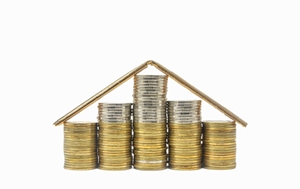
Investment properties are a popular addition to many people's portfolios, as they can provide capital growth over the long term and much-needed cash flow through rental income in the meantime.
Both strategies look promising in the current property market environment. The median Melbourne dwelling price climbed 11.8 per cent year on year to $640,000 in January, according to the latest CoreLogic data.
Gearing refers to whether or not you are making a profit on the money that you have borrowed for an investment.
Meanwhile, the Real Estate Institute of Victoria's rental market snapshot showed weekly rents climbed to $427 in December 2016 for metropolitan Melbourne properties and to $310 for homes in regional parts of the state.
If you are in the market for your first investment property, you will likely have heard of the terms positive and negative gearing. Let's take a closer look at these concepts and delve into the tax implications of each one.
Understanding positive and negative gearing
Put simply, gearing refers to whether or not you are making a profit on the money that you have borrowed for an investment.
A positively geared property therefore means that the income you receive from renting it out is higher than the interest you're paying on the loan plus any other expenses. Conversely, negative gearing is a situation where your income is outweighed by the costs of the property.
On the surface, it may seem that investors should only purchase properties that are positively geared in order to boost their cash flow through rent. But many individuals are unaware of how extensive some tax deductions can be for rental homes.
This can turn a negatively geared property into a positive cash flow investment, as your deductions could significantly reduce the rental shortfall and lower your taxable income.

Which type of gearing is the best for me?
Whether positive or negative gearing is more suited to your circumstances will depend on a range of factors. However, a qualified accountant in Geelong can discuss with you the tax implications of each option.
On balance, positive gearing provides an immediate income stream and is less risky than negative gearing. You may also find that lenders are more willing to let you borrow money.
Negative gearing, meanwhile, can have sizeable tax benefits and provide capital gains over the long term when the value of the property exceeds your borrowing amount.
If you would like to learn more about positive and negative gearing or any of our rental property services, please contact WMC Accounting today.



